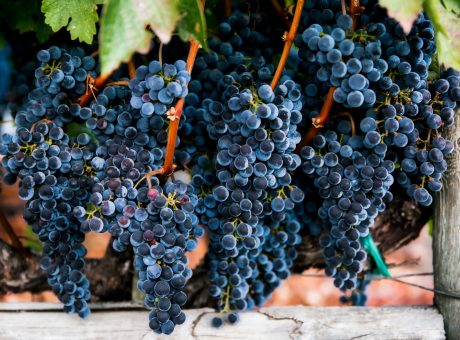Demystifying German Wines
 Trying to understand German Wines can be very intimidating and confusing for many consumers. Trying to decipher the label alone can send your mind through a series of puzzles and failed pronunciation attempts, but when I tell you, that once you actually understand how to read the label and you know what it is you are buying, you will have opened up your world to a beautiful and exciting new wine category! These wines are beautiful, fruit forward, and offer everything the modern wine enthusiast wants; they have flavor, diversity, and quality. German wine differs from wines of other countries in that the wine is light, lively and fruity, due to Germany’s unique climatic and geological conditions.
Trying to understand German Wines can be very intimidating and confusing for many consumers. Trying to decipher the label alone can send your mind through a series of puzzles and failed pronunciation attempts, but when I tell you, that once you actually understand how to read the label and you know what it is you are buying, you will have opened up your world to a beautiful and exciting new wine category! These wines are beautiful, fruit forward, and offer everything the modern wine enthusiast wants; they have flavor, diversity, and quality. German wine differs from wines of other countries in that the wine is light, lively and fruity, due to Germany’s unique climatic and geological conditions.
To understand the German wines you are buying, you must first understand the style of wine you are buying which will be located on the front of the label. There are many different categories that will classify the wine from the driest to sweetest levels. These terms will tell you how ripe the grapes were at harvest, sugar levels measured and how intense the flavors will be. The riper the grapes, the stronger the flavor and aroma will be. Qualitatswein mit Pradikat is the designation for wines with attributes (germanwineestates.com) and must have one of the terms for the ripeness on the label. You will notice that the label will include one of the six categories:
- Kabinett – lightest of the wines and usually dry
- Spatlese – means late harvest, more intense flavors than Kabinett, dry, not necessarily sweet
- Auslese – usually, but not necessarily sweet with intense flavors
- Beerenauslese (BA) – made from overripe grapes which are affected by botrytis mold causing a concentrated sweet taste
- Trokenbeerenauslese (TBA) – made from raisined grapes also affected by the botrytis mold, making a super sweet, honey-like wine
- Eiswein – ice wine, very sweet made from grapes that were allowed to freeze before harvesting
Two other important terms to watch for on the label describe the dryness of the wine. This term will not be used with the very sweet wines and appears before the above categories:
- Troken: very dry and no residual sugar will be perceived on the palate, however this wine can have at least 9g per liter of residual sugar in the wine.
- Halbtroken: semi-dry wine with at least 18g of residual sugar per liter, and by many wine enthusiasts is still considered dry.
 As you can see, German wines are surprisingly easier to understand once you know what you are reading. These wines are beautiful, elegant, and mostly age worthy. The aged Reislings, the most well known of German wines in the U.S., develop from aromas and flavors of citrus, apples, peaches and apricots when young, to aromas and flavors of cooked fruit, honey and petro l when aged. Absolutely gorgeous!
As you can see, German wines are surprisingly easier to understand once you know what you are reading. These wines are beautiful, elegant, and mostly age worthy. The aged Reislings, the most well known of German wines in the U.S., develop from aromas and flavors of citrus, apples, peaches and apricots when young, to aromas and flavors of cooked fruit, honey and petro l when aged. Absolutely gorgeous!
You may think that all German wines are those “too sweet for me” varieties and can’t be paired with food easily, but you’re in for a surprise, learn to read the label and you will see all the possibilities. For example, try a Troken Reisling with some spicy shrimp or that fabulous pork tenderloin, you will be amazed!
So next time you are looking for a wine to pair with your meal, go ahead, be adventurous, and feel comfortable choosing a German wine now that you can understand the label.
 About the author: My name is Sara Lehman and I am a graduate of Johnson & Wales University, Providence RI. I have a bachelor’s degree in Baking/ Pastry Arts and Food Service Management/Entrepreneurship. I have been in love with food and wine since I was very young, growing up with parents who loved to cook and build a wine collection. I spent many hours experimenting in the kitchen on my own or helping them with dinner and dessert. I knew this industry was where I wanted to focus my attention.
About the author: My name is Sara Lehman and I am a graduate of Johnson & Wales University, Providence RI. I have a bachelor’s degree in Baking/ Pastry Arts and Food Service Management/Entrepreneurship. I have been in love with food and wine since I was very young, growing up with parents who loved to cook and build a wine collection. I spent many hours experimenting in the kitchen on my own or helping them with dinner and dessert. I knew this industry was where I wanted to focus my attention.
My passion for this industry came about in high school when I took culinary classes and had incredible chef mentors. I worked summers at their local restaurants, helping open dessert departments and offering my own specialties. I’ve worked as a Pastry Chef in various locations in NJ and spent one summer in Cape Cod at an upscale hotel as a pastry chef and running the dessert night line. After my junior year of college, I did a study abroad for my Sommelier degree which allowed me to study at The German Wine School. It was the most amazing experience studying in Koblenz, Germany. There we analyzed, tasted, and paired wines from all around the world with food and or desserts. Every country we learned about we were able to talk to the Producers, walk through their vineyards, and have tastings with them! When I returned home I knew my goal was to find a career in the wine industry.





Celebrate with Sparkling Wine | Wine Sisterhood
[…] Sekt is the term for German sparkling wine usually made using the tank or Charmat method. The base of Sekt usually consists of grapes from France or Italy, but when using German grapes the wine will be called Deutscher Sekt. The best German sparklings are made from Riesling and can be from any of the thirteen regions in Germany. Some rare Sekt is made using the traditional method. We’ve demistified other German wines here. […]
30 . Dec . 2012